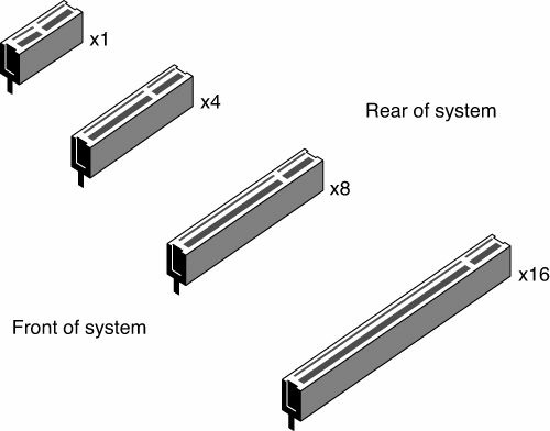Hardware Reference
In-Depth Information
the length of the bus becomes much less of a factor. By combining multiple serial data paths, even
faster throughputs can be realized that dramatically exceed the capabilities of traditional parallel
buses.
PCI Express is a fast serial bus design that is backward compatible with current PCI parallel bus
software drivers and controls. In PCI Express, data is sent full duplex (simultaneously operating one-
way paths) over two pairs of differentially signaled wires called a
lane
. Each lane allows for about
250MBps throughput in each direction initially, and the design allows for scaling from 1 to 2, 4, 8,
16, or 32 lanes. For example, a high-bandwidth configuration with 16 lanes allowing 16 bits to be
sent in each direction simultaneously would allow up to 4,000MBps bandwidth each way. PCIe 2.0
increases the transfer rate to 500MBps per lane, or 8,000MBps for an x16 connector. This compares
to PCI, which has only 133MBps bandwidth (one way at a time).
Figure 4.46
compares the PCI
Express x1-x16 connectors. Note that the PCI Express x4 and x8 connectors shown in this figure are
intended primarily for use in workstations and servers.
Figure 4.46. PCI Express x1, x4, x8, and x16 slots.
PCI Express versions 1 and 2 use an IBM-designed 8-bit-to-10-bit encoding scheme, which allows
for self-clocked signals that will easily allow future increases in frequency. The starting frequency is
2.5GHz, and the specification allows increasing up to 10GHz in the future, which is about the limit of
copper connections. By combining frequency increases with the capability to use up to 32 lanes, PCI
Express is capable of supporting future bandwidths up to 32GBps. PCI Express version 3 uses
128b/130b encoding for further speed improvements over its predecessors.
PCI Express was designed to augment and replace many of the buses currently used in PCs. It is not
only designed to be a supplement to (and the replacement for) PCI slots it can also be used to replace
the existing Intel hub architecture, HyperTransport, and similar high-speed interfaces between
motherboard chipset components. Additionally, it replaces video interfaces such as AGP and acts as
a mezzanine bus to attach other interfaces, such as Serial ATA, USB 2.0. USB 3.0, 1394b (FireWire
or i.LINK), Gigabit Ethernet, and more.


